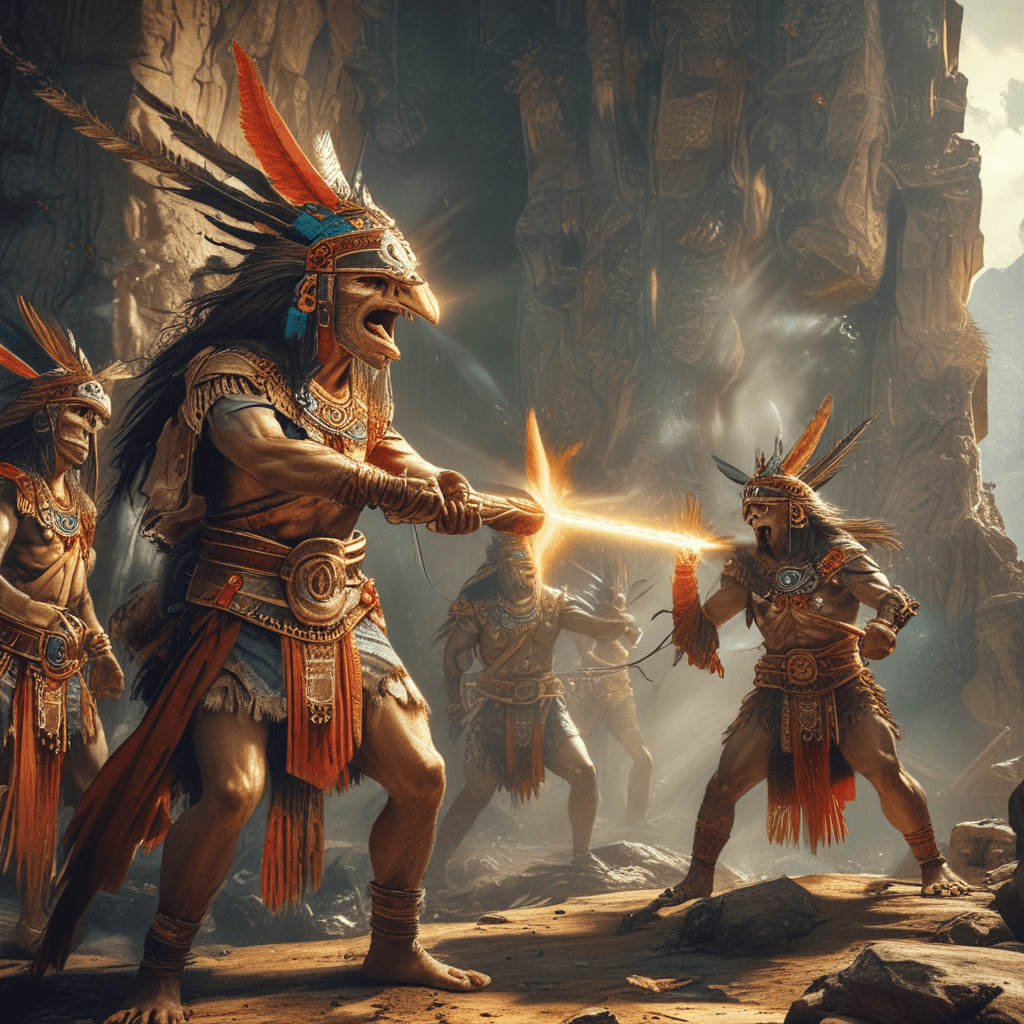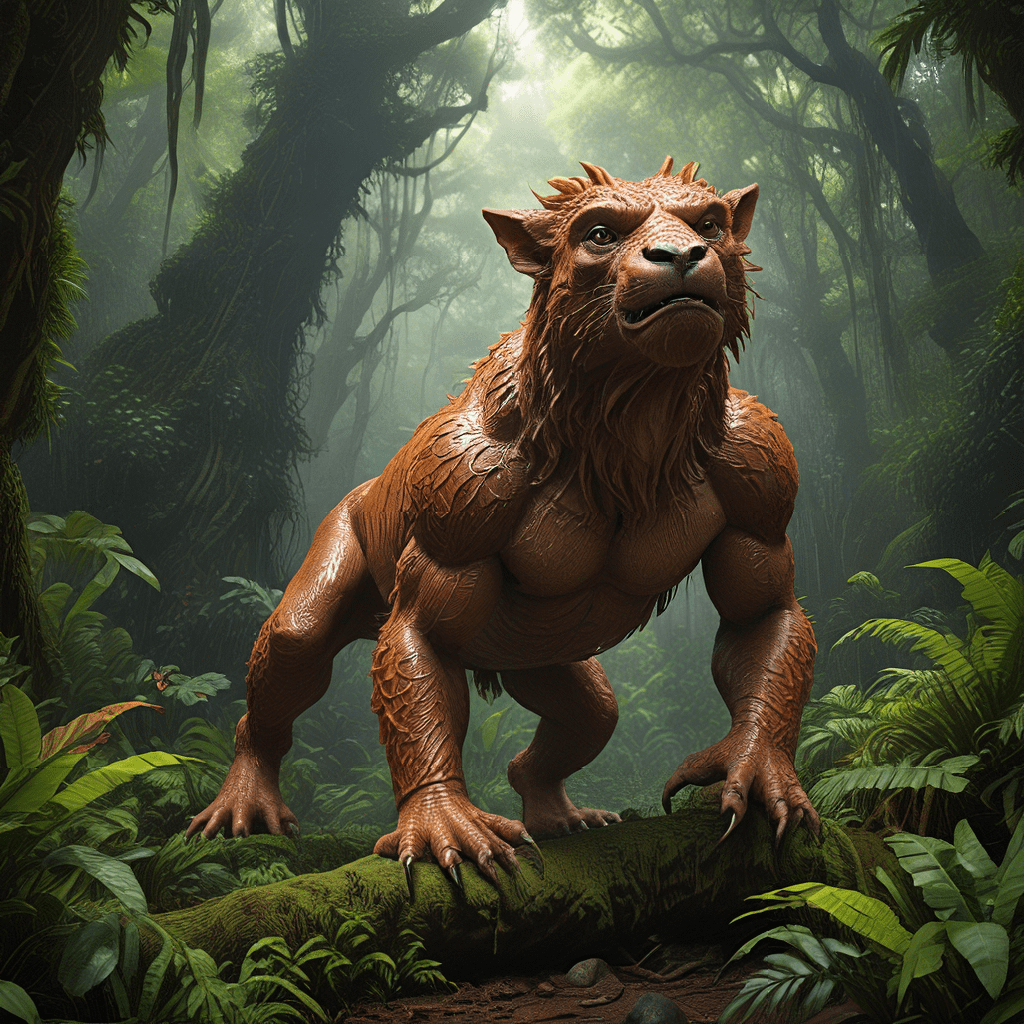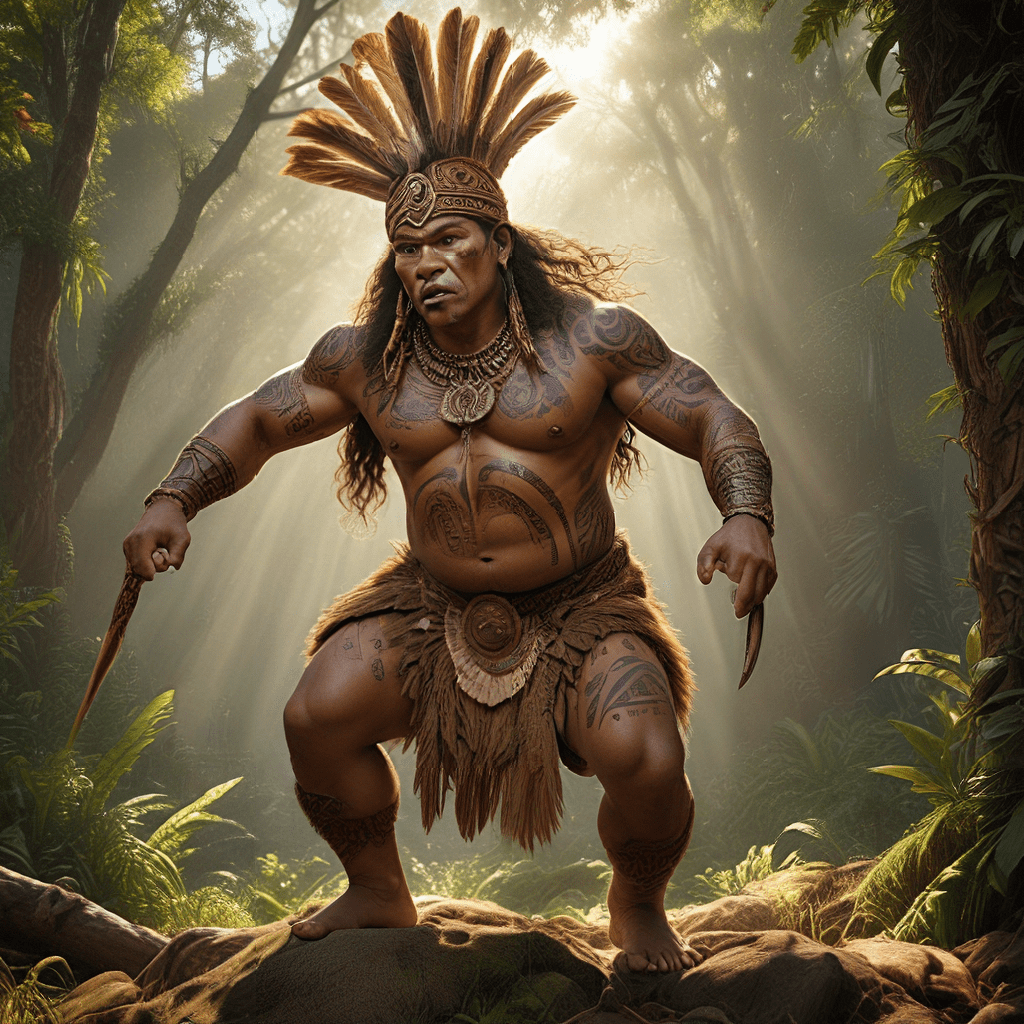Incan Mythological Warfare: Battles of Mortals and Deities
In the vast and captivating world of Incan mythology, warfare wasn't just a clash of armies; it was a cosmic struggle where the fates of mortals intertwined with the whims of powerful deities. This captivating tapestry of myth and legend reveals a profound connection between the Incan people and their divine counterparts, shaping their understanding of combat, strategy, and the very essence of existence.
The Incan Pantheon: A Complex Web of Deities and Their Roles
The Incan pantheon was a vibrant collection of deities, each with their unique domain and influence. These divine beings were intricately woven into the fabric of Incan life, guiding their actions, shaping their beliefs, and dictating the course of their existence.
At the heart of the Incan pantheon stood Viracocha, the supreme creator god, responsible for bringing forth the universe and all its inhabitants. Lesser deities, each with their specific powers and responsibilities, played crucial roles in the Incan world. Inti, the sun god, represented warmth, light, and life-giving energy. His sister, Mama Killa, the moon goddess, embodied the cycles of nature, the ebb and flow of life, and the mysterious allure of the night. Pachamama, the earth mother, was revered for her nurturing power, providing food, shelter, and the very ground on which the Incan people walked.
The Incan pantheon was a complex and interconnected web, a reflection of the intricate relationships that existed between humans and the divine in their world.
Viracocha: The Creator God and the Divine Spark of War
Viracocha, the ultimate creator, was not simply a passive observer of the world he had made. He actively intervened in the affairs of mortals, often shaping their destinies and influencing the course of history. His presence was felt in every aspect of Incan life, from the cycles of nature to the ebb and flow of war.
In Incan mythology, Viracocha was the ultimate source of power and authority, and his influence extended to the realm of warfare. He was believed to have instilled a divine spark of courage and strength within men, making them capable of fighting and conquering. This spark was seen as the source of human bravery, the driving force behind the Incan army’s relentless pursuit of victory. The idea of a divine spark, a gift from Viracocha himself, imbued the act of combat with a profound spiritual significance, making it more than just a physical struggle. It was a clash of wills, a test of one’s strength, and a testament to the divine power that flowed through their veins.
Inti and Mama Killa: Solar and Lunar Influences on Combat
Inti, the sun god, was a powerful symbol of strength, energy, and vitality. Incan warriors looked to Inti for guidance and protection on the battlefield. They believed that his rays energized them, emboldening them in battle and giving them an edge over their enemies.
Mama Killa, the moon goddess, played a different role in Incan warfare. While she was not directly associated with combat, her influence on the tides, the cycles of nature, and the ebb and flow of life was deeply respected. Her presence in the night sky provided a sense of mystery and an element of the unknown, adding a layer of complexity to the Incan understanding of battle.
The combined influences of Inti and Mama Killa created a dynamic balance in Incan mythology, reflecting the constant interplay of light and darkness, life and death, and the ebb and flow of conflict.
Pachamama: The Earth Mother and the Importance of Terrain
Pachamama, the earth mother, was believed to hold a deep connection with the land, providing nourishment and resources to the Incan people. Her presence was felt in the mountains, valleys, and plains that formed their homeland. This connection extended to the realm of warfare, impacting both the strategies of Incan armies and their approach to combat.
Incan warfare was closely tied to the land itself. Warriors sought to understand the terrain, using its features to their advantage and exploiting their enemy's weaknesses. The mountains, valleys, and rivers became crucial elements in Incan battle plans, reflecting Pachamama’s influence on their tactics and their understanding of the battlefield.
The Incan belief in Pachamama fostered a profound respect for the land and its resources, leading to a deep understanding of its strategic potential.
The Divine Curse of the Pachakuti: The Birth of War
In Incan mythology, the arrival of war was not simply a natural occurrence; it was a consequence of a cosmic upheaval known as the Pachakuti. This event, often translated as “turning upside down” or “the world turned around,” marked a radical shift in the order of the cosmos, bringing about a period of chaos and conflict. It was a time when the natural world was disrupted, societal structures were overthrown, and the balance of power was dramatically altered.
The legend of the Pachakuti describes a world in harmony, a time when humans lived in peace and prosperity. However, this peaceful existence was shattered by a cosmic upheaval, a disturbance that unleashed chaos and violence upon the world. This event transformed the once harmonious world into a place of conflict, where humans were forced to fight for their survival. It is believed that the Pachakuti was a divine punishment, a curse that brought about the horrors of war. This curse was seen as a punishment for humanity’s transgressions, a consequence of their hubris and their disregard for the divine order.
The Pachakuti, a cosmic event that shattered the peaceful world, is the origin of war in Incan mythology. It represents a profound shift in the balance of power, marking the beginning of conflict and chaos. It signifies the consequences of human actions, a reminder of the fragility of peace and the potential for destruction.
Mythological Origins of Incan Warfare: Lessons from the Past
The Incan people believed that their ancestors, guided by the deities, had faced countless battles and emerged victorious. These stories, passed down through generations, served as valuable lessons in warfare, providing insights into strategy, tactics, and the importance of divine favor. From the legendary battle of the first Incan emperor, Manco Cápac, against the forces of darkness, to the epic struggle between the sun god, Inti, and the moon goddess, Mama Killa, for control of the cosmos, these myths offered practical wisdom and spiritual inspiration to the warriors of the Inca empire.
Incan mythology was filled with stories of cunning strategies, tactical brilliance, and the unwavering courage of their ancestors. These accounts provided a rich source of guidance for future generations, teaching them how to navigate the complexities of warfare and how to approach conflict with both intelligence and bravery. The myths served as a historical record, a repository of knowledge about past battles, and a source of inspiration for future generations. They provided a framework for understanding the nature of war, the importance of preparation, and the need for strategic thinking.
The Role of Shamans and Rituals in Incan Warfare
Shamans, revered as spiritual healers and intermediaries between the mortal and divine realms, held a critical position in Incan society. They were masters of ritual and ceremony, drawing upon the power of the deities to influence events and guide the actions of the Incan people. In times of war, shamans played a crucial role in preparing warriors for battle, seeking divine favor, and ensuring victory.
Before any military campaign, shamans led elaborate rituals designed to appease the deities, secure their blessings, and gain their favor. They performed sacred ceremonies, chanted ancient prayers, and offered sacrifices to ensure that Inti, the sun god, would shine brightly upon their army, bestowing them with strength and energy. They also invoked the protection of Pachamama, the earth mother, to grant them safe passage across the land and to provide them with the resources they needed to sustain their journey.
The Incan Use of Mythological Symbols and Weapons
The Incan people believed that their weapons and symbols held a powerful spiritual significance. They were not simply tools for combat but extensions of their faith, imbued with the energy of the gods themselves. These symbols served as a constant reminder of their connection to the divine, providing them with courage and motivation on the battlefield.
The Incan army carried with them the sacred symbol of Inti, the sun god, represented by a golden disc adorned with feathers. This symbol was believed to embody the warmth, light, and life-giving energy of the sun, empowering them with strength and guiding them towards victory. The image of Inti was also engraved upon their weapons, imbuing them with divine power and making them more than just tools of war. They were instruments of the gods, extensions of their will.
Deities as Allies: Seeking Divine Favor on the Battlefield
The Incan people believed that their deities were active participants in every aspect of their lives, including their battles. They viewed their gods as powerful allies, capable of influencing the tide of war and determining the outcome of battles.
In the midst of battle, Incan warriors would pray to the deities for guidance, protection, and victory. They believed that the spirits of their ancestors also fought alongside them, offering their protection and support. This belief in divine intervention provided them with a sense of purpose and meaning, transforming the act of combat into a sacred duty. In their minds, each battle was not simply a physical struggle but a spiritual encounter, a clash of wills between mortals and the deities.
The Enduring Legacy of Incan Mythological Warfare: A Timeless Inspiration?
The Incan understanding of warfare, shaped by their profound belief in the divine, left an indelible mark on their culture and legacy. Their myths and belief system provided a framework for interpreting the world, understanding their place within it, and guiding their actions, even in the midst of conflict.
The Incan legacy continues to inspire and fascinate people today. Their sophisticated civilization, complex mythology, and unique approach to warfare offer valuable insights into the human experience and the enduring power of faith. The Incan myths, with their timeless themes of courage, resilience, and the eternal battle between good and evil, have a powerful resonance for modern audiences, reminding us of the enduring power of belief and the enduring influence of mythology.
FAQ
Q: What is Pachakuti?
A: Pachakuti is an Incan concept that represents a radical shift in the order of the cosmos, typically signifying a time of upheaval, chaos, and conflict. It is believed to be a divine curse, a punishment for humanity's transgressions.
Q: Who were the shamans in Incan society?
A: Shamans were spiritual healers and intermediaries between the mortal and divine realms. They were responsible for performing rituals, seeking divine favor, and guiding the Incan people.
Q: How did Incan myths influence their warfare?
A: Incan myths provided lessons in strategy, tactics, and the importance of divine favor. They also offered a framework for understanding the nature of war, the importance of preparation, and the need for strategic thinking.
Q: What were some of the symbols used in Incan warfare?
A: The Incan army carried with them the sacred symbol of Inti, the sun god, represented by a golden disc adorned with feathers. The image of Inti was also engraved upon their weapons.
Q: How did the Incan people view their deities in relation to warfare?
A: The Incan people viewed their deities as powerful allies, capable of influencing the tide of war and determining the outcome of battles. They believed that the spirits of their ancestors also fought alongside them, offering their protection and support.



